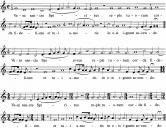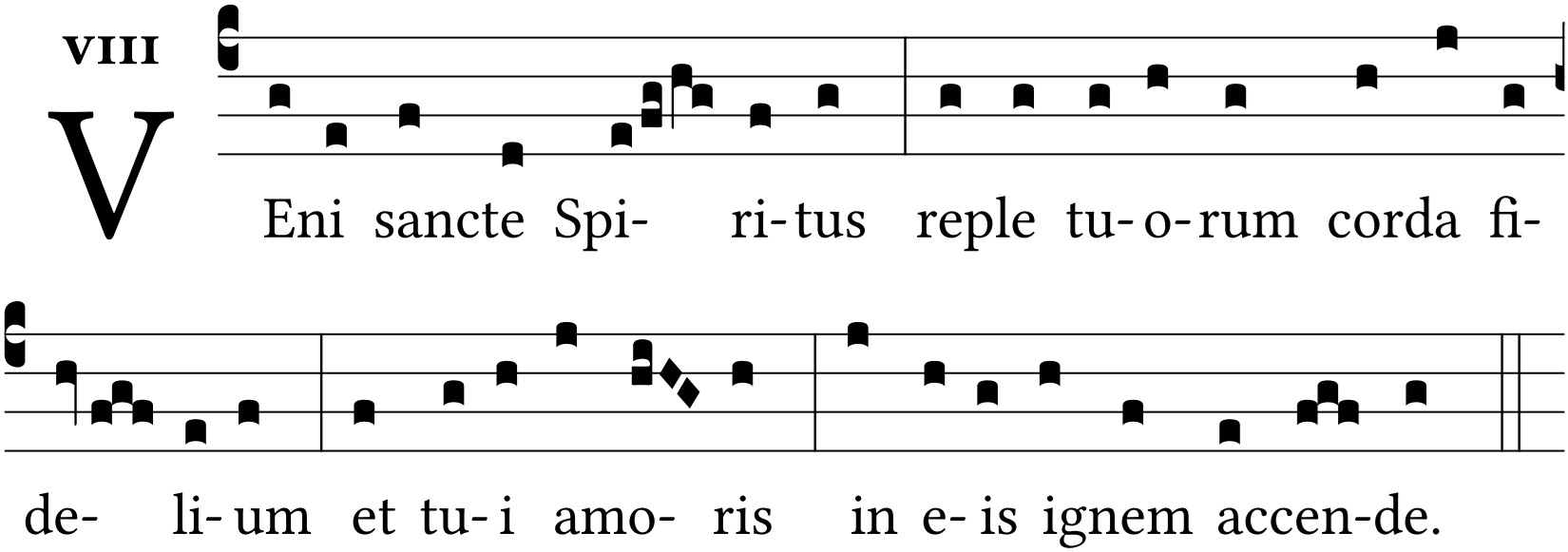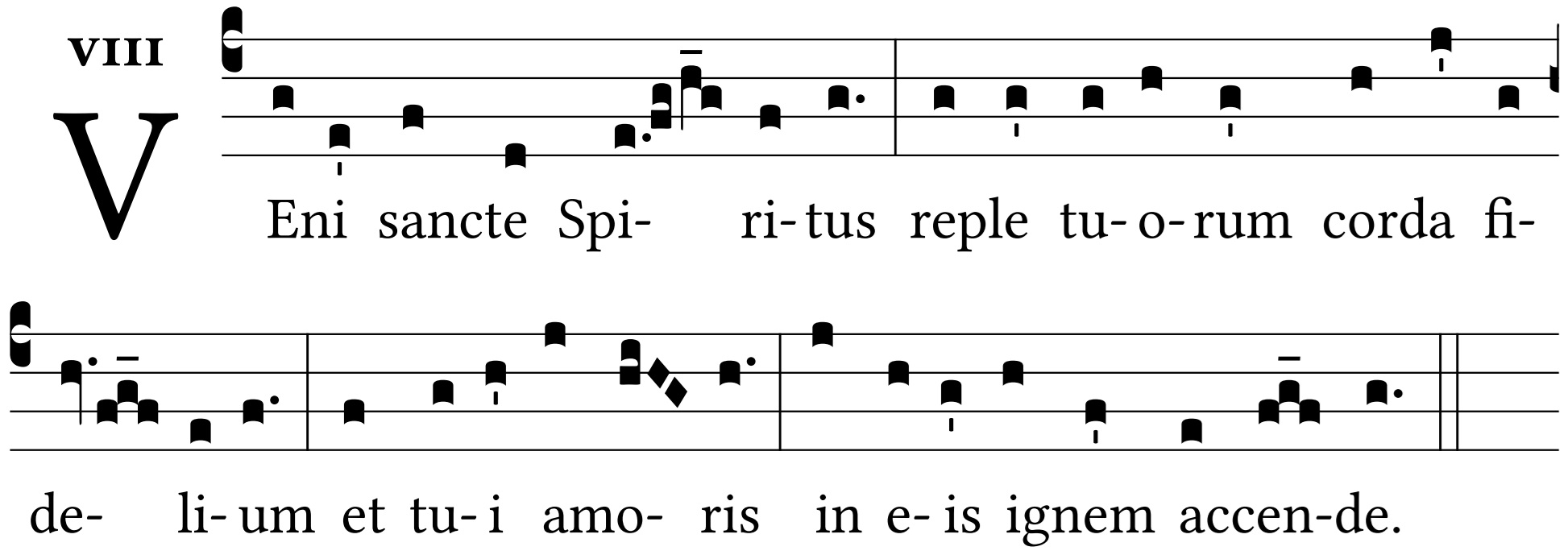Veni Sancte canon in mensural notation...help?
-
I know the basic rudiments of mensural notation, but this one is beyond my ability. Anyone feeling bored and want to transcribe the attached canon for me? :)
Note: the attached image is NOT this: https://www.youtube.com/watch?v=buttg4l9JSQ
...nor this: https://www.musicalion.com/en/scores/sheet-music/6288/adam-gumpelzhaimer/17469/benedic-anima-mea-veni-sancte-spiritus#interpretation=1
Thanks for anyone who can help!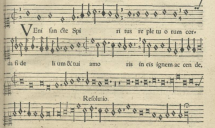
 Veni Sancte-canon.png1065 x 634 - 1000K
Veni Sancte-canon.png1065 x 634 - 1000K -
Having thought about this awhile, it seems to me that the last two lines ("Resolutio") explain the first two mensural lines. The "1 (over) 2", "1 (over) 3", and "1 (over) 4" are mensural indications that basically say a semibreve gets multiplies by 2, 3, and 4, respectively, as evidenced in the resolution (the semibreve of the upper two lines becoming a breve, dotted breve, and a long, respectively). The clef seems to be a Fa clef. This is supposedly a canon, but I'm not sure what the delay and pitch of the second voice is ... possibly a fourth above (or fifth below)?
Thanked by 1Heath -
I don't see any obvious indications that it's a canon showing multiple voices from the single part; at least that's not apparent from the notation. Is there any other information?
What we do have in the image is one melody set out twice. In the upper two staves, it is shown using proportion signs. The proportions show various levels of augmentation, as CHGiffen suggests. In the lower two stave it's shown again but without any of the proportion. In other words, the augmentation is all written out.
The clef looks like a soprano clef (bottom line is middle C).
Hope that helps! -
Heath might have given a little context: what is this from?
-
Patrick, thanks for the notation!
So I got it from a collection called "Compendium Musicae," late 16th century, editor was Adam Gumpelzhaimer. It seems to be anonymous...and now I'm questioning if it's even a canon.
Relevant pages in the collection (large file) are PDF pages 31 ... and maybe 32: https://vmirror.imslp.org/files/imglnks/usimg/9/9a/IMSLP292132-PMLP325522-gumpelzhaimer_compendium_musicae_1591_386871701.pdf
Any more insight is so welcome! I've very intrigued by this...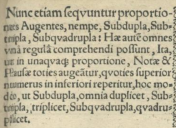
 Veni info.png493 x 358 - 286K
Veni info.png493 x 358 - 286K -
Ok. Thanks for that context, Heath. I think my initial guess was right, and that it's not a two-from-one canon. Rather it's a music example showing the use of proportion signs for augmentation. Here is a translation of that paragraph:Now then there follow the proportions of augmentation, of course, the sub-duple, sub-triple, and sub-quadruple. These then can all be comprehended under one rule, that within each proportion, all the notes and rests are augmented by whatever time the numerator is contained in the denominator, in the following manner: in sub-duple, everything is doubled; in sub-triple, everything is tripled; and in sub-quadruple, everything is quadrupled.
The music example shows an example of each of these proportions in the first two lines, and in the second two lines it is shown written without proportion signs. Such late examples of proportion are always deliberately weird theory exercises, meant to show the power of the notation; these are not things you would ever encounter in a piece. The best way to read these numbers, as Tinctoris suggests, is to think "[numerator] in the time of the [denominator]." Thus the first proportion (1/2) is "one semibreve in the time of two semibreves." In other words, you have to double everything. In actual practical music from the sixteenth century, the only proportion sign you are likely to encounter is cut-c 3/2, which means roughly that the breve gets the tactus and that you sing three semibreves in the time of two. Of course, in actual performance, what this means for tempo is by no means a settled question without controversy! Is it tactus-equals-tactus, bar-equals-bar, minim-equals-minim, or just do whatever you want?
Patrick, while I do think your second effort is more prayerful, of course, I do want to ask why you chose four-to-one reduction, which I think makes this more confusing. In other words, you take the semibreve of the regular, non-augmented version, as the quarter note. This makes it seem odder than it really is. I'd prefer to see a notation like what Gumpelzhaimer shows in lines three and four. -
I assumed that in asking for a transcription, the questioner was seeking something like a more standard form of modern notation without extensive use of breves and longae, which required exactly that level of reduction. Here are the original note values, first with G clef and slurs, then with C clef and no slurs.I do want to ask why you chose four-to-one reduction, which I think makes this more confusing.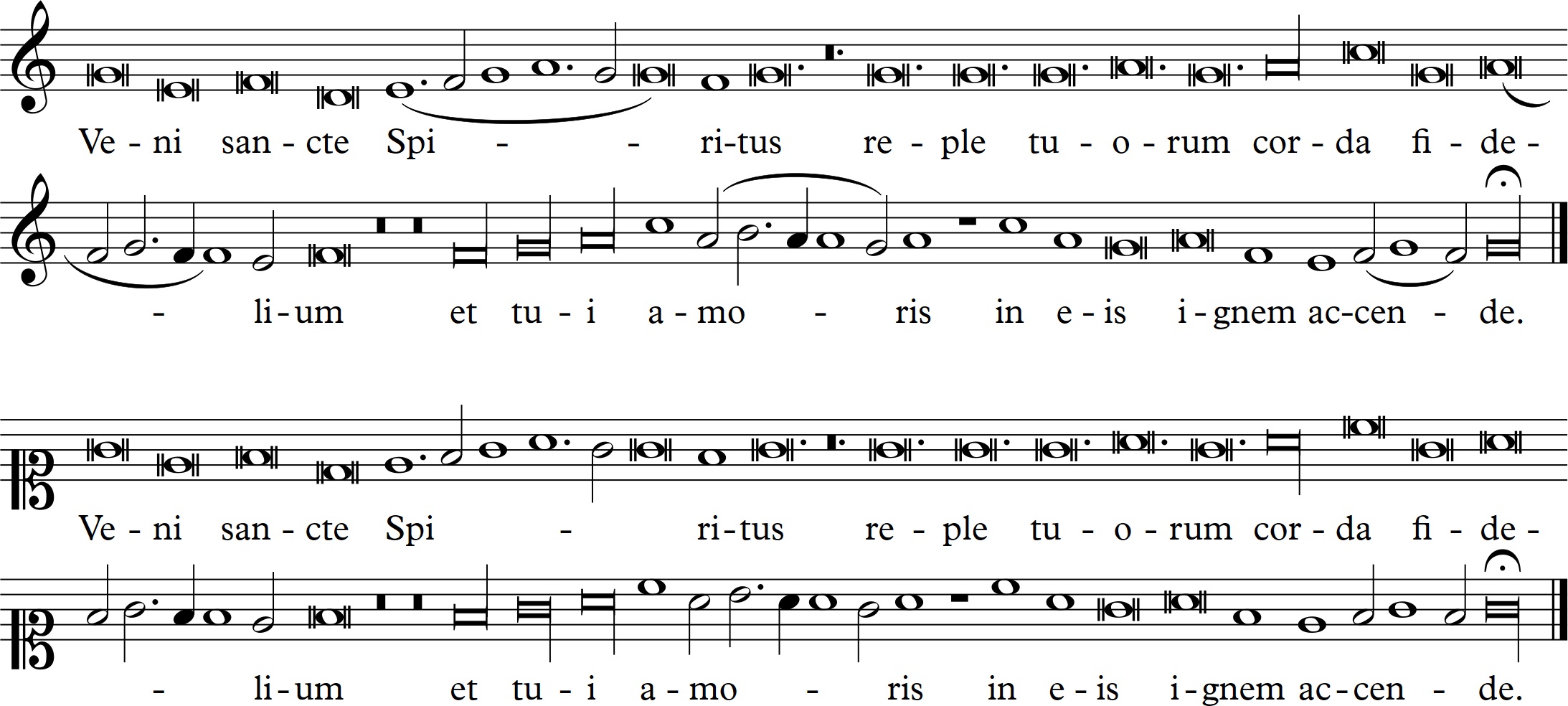

 Veni Sancte Spiritus original.jpg2186 x 984 - 378KThanked by 1Heath
Veni Sancte Spiritus original.jpg2186 x 984 - 378KThanked by 1Heath
Welcome to the MusicaSacra Forum!
To participate in the discussions on Catholic church music, sign in or register as a forum member, The forum is a project of the Church Music Association of America.
Categories
- All Discussions21,056
- General Music Discussion8,195
- Job Openings190
- Management of Music Programs850
- Choral Matters532
- Church Documents and Rubrics524
- CMAA Notes300
- Events713
- For Newcomers: Read First26
- Sacred Polyphony546
- Hymnody871
- Gregorian Chant: General2,694
- ↳ Graduale Romanum and Liber Usualis367
- ↳ Graduale Simplex60
- ↳ Semiology63
- Vernacular Plainsong695
- Anglican Use and Anglican Chant69
- Organ, Other Instruments and Repertoire433
- New Composition/Works in Progress1,286
- Recordings229
- Music for Hispanic Ministry159
- Music Education: Children211
- Music Education: General222
- News Items245
- Positions Wanted2
- General Discussion: Catholicism738
- Amusements176
- General Discussion1,033
- Opinions117



